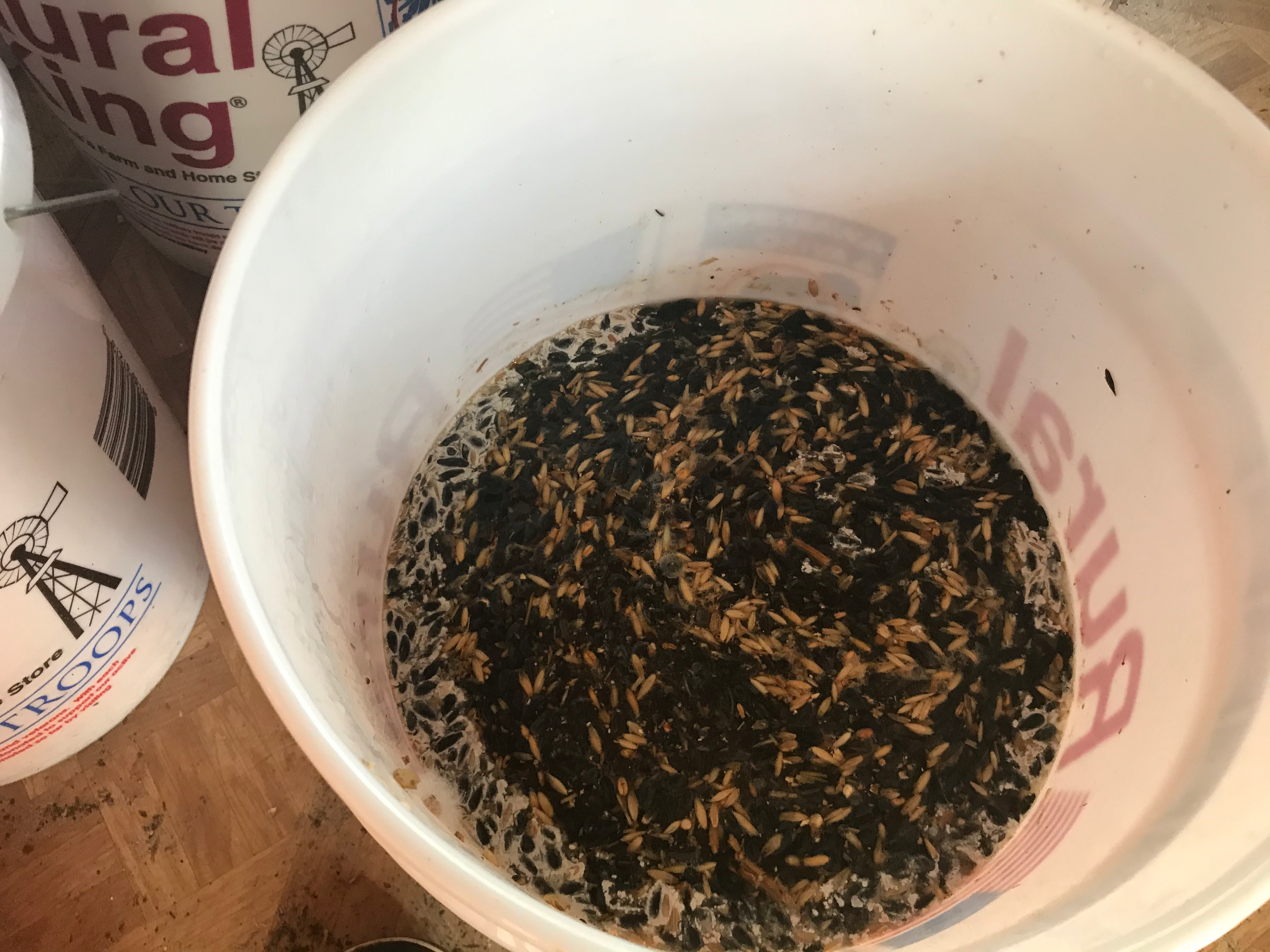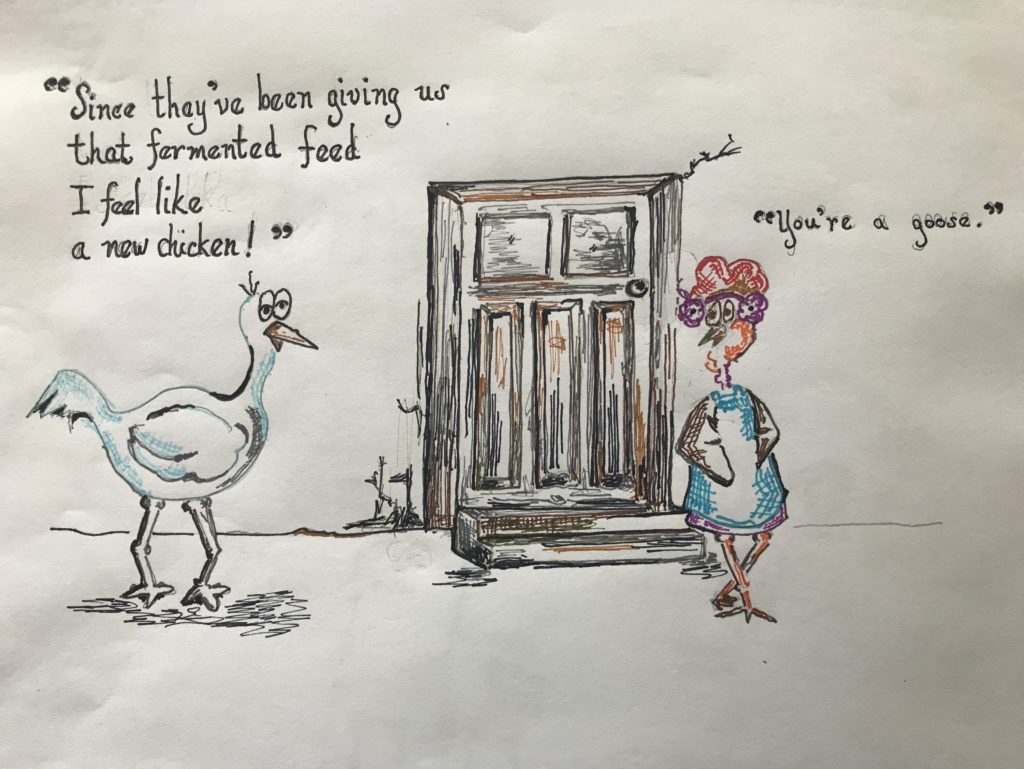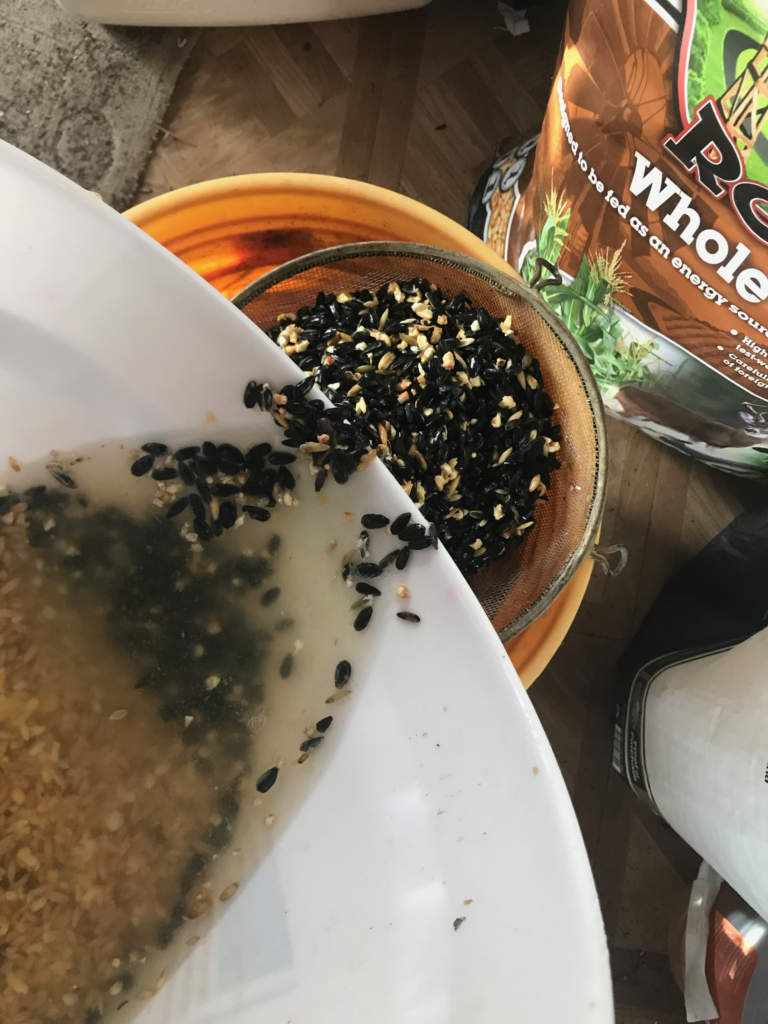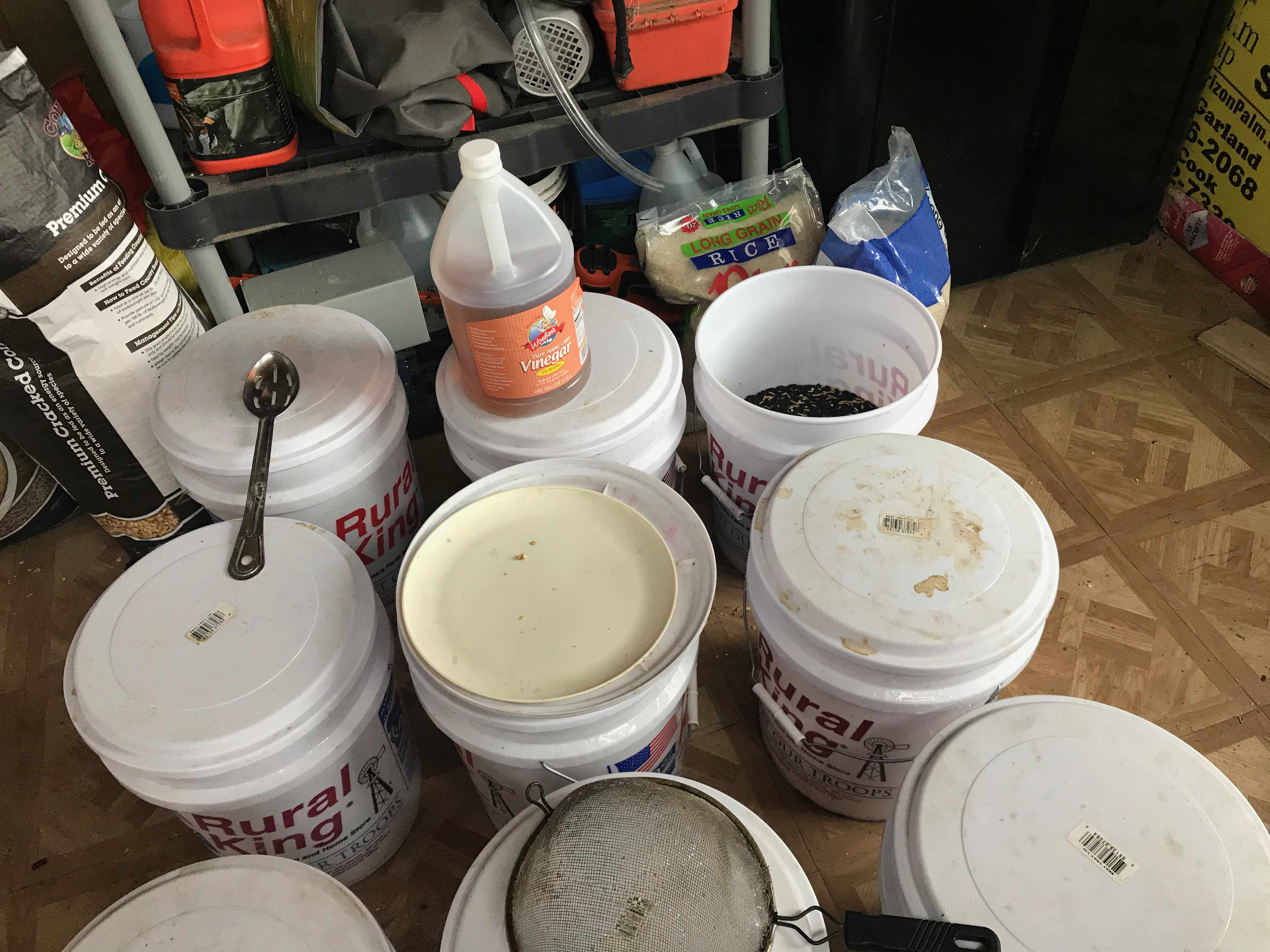Momma Hen emerged from her carefully constructed nest under the tarps in the pole barn today. She once again brings out into the light a flock of baby chicks. Mostly they are Indian Jungle Fowl like her, but this time there is one Easter Egger. Now how did that baby get mixed in? Well, nevermind. She will love them all just the same. Welcome back, Momma Hen!
Red Indian Jungle Fowl are the original chicken breed, and Momma Hen takes her job of raising chicks very seriously. Just like her human counterpart, she encourages the chicks to venture out away from her, but provides a safe haven when they are frightened and run back to hide under her fluffy skirt.
She takes them a little further away from the nest each day, returning several times to nap as they grow. She shows them how to scratch for bugs and seeds and how to stay camouflaged in the bushes when the geese spot hawks in the air. She keeps them just long enough for them to learn what they need to know, and then sends them off on their own at just the right time. Sound familiar?
We see patterns in nature that mirror our own behaviors in the community. It’s important to recognize those patterns and not let our busy lives disrupt them. We have lost a lot of the ideas that our ancestors used to guide their lives. Our families have been torn apart and we care more about creature comforts than building character in our children. We care more about convenience than helping our children develop the skills they need to thrive.
Let’s stay put on the homestead and build the memories that our kids need to realize what’s important and what needs to be done. Maybe that’s what this pandemic is all about.
Happy Homesteading,
T.







